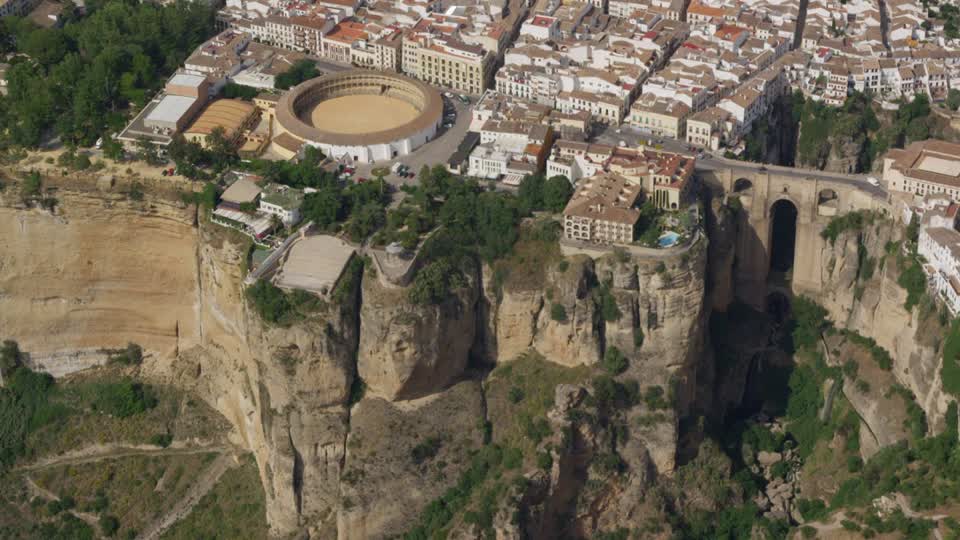
Looking like something out of of a fantasy novel, the city of Ronda is perched high atop the two cliff faces of the El Tajo canyon as though a fissure opened and swallowed the interior of the city.
Ronda is one of the oldest cities in Spain, it was first established in the time of Julius Caesar and has managed to survive through shifting geological conditions to this very day. However, its origin, according to archaeological findings date it back to the Neolithic age. Evidence of this lies in cave paintings found in the area, the most important being the one found at Pileta's Cave, which is one of the best examples from the Paleolithic age in Andalusia.
Ronda was, however, first settled by the early Celts, who, in the 6th century BC, called it Arunda. Later Phoenician settlers established themselves nearby to found Acinipo, known locally as Ronda la Vieja, Arunda or Old Ronda. The current Ronda is however of Roman origins, having been founded as a fortified post in the Second Punic War, by Scipio Africanus. Ronda received the title of city at the time of Julius Caesar.
The Guadalevín River which runs down the very center of the city grounds has spent millennia slowly eroding the land and creating the deep canyon that now separates divides the historic urban center. The walls of the canyon are sheer drops to the river over 100 meters below and the white, Spanish stone buildings are built to the very edge of the chasm.
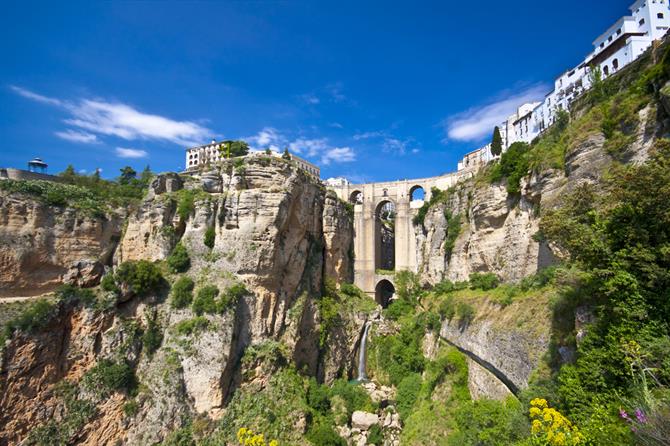
Connecting the city are three bridges that span the expanse, the Roman Bridge, the Arab Bridge, and the New Bridge. Each bridge is named to describe the regime that built it, save for the "New" bridge which was actually finished in 1793. The bridges themselves are impressive feats of stonework with massive columns reaching down into the canyon and ornate roofs, giving the city the multicultural feel that its many ruling peoples brought with them. The Puente Nuevo is the tallest of the bridges, towering 120 metres (390 ft) above the canyon floor, and all three serve as some of the city's most impressive features. The former town hall, which sits next to the Puente Nuevo, is the site of a parador, and has a view of the Tajo canyon.

In addition to the geological wonders the city brings, Ronda is also home to Spain's oldest bullfighting ring, and is a proud supporter of the sport. In fact the fantastical city was well enough known for the pastime that it garnered such high profile residents as Ernest Hemingway and Orson Welles who both spent numerous summers at the location. The well-known ‘Corrida Goyesca’ is a unique and historical bullfight that takes place once a year in Ronda in the Plaza de Toros de Ronda. It was built in 1784 in the Neoclassical style by the architect José Martin de Aldehuela, who also designed the Puente Nuevo.
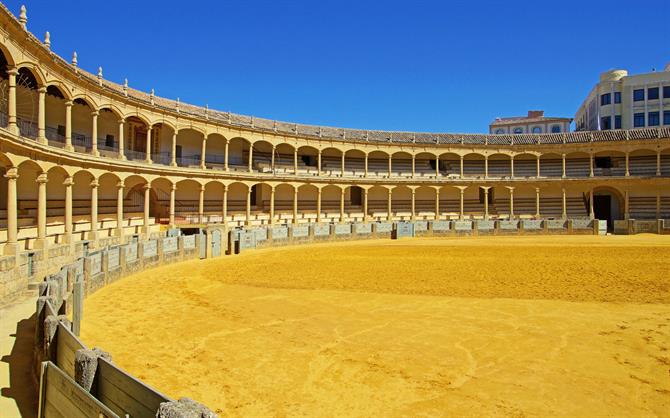
Ronda is considered the birthplace of modern bullfighting, today glimpsed only once a year at the spectacular Feria Goyesca held at the beginning of September, here matadors and some of the audience dress in the manner of Goya's sketches of life in the region. Legendary Rondeño bullfighter Pedro Romero broke away from the prevailing Jerez 'school' of horseback bullfighting in the 18th century to found a style of bullfighting in which matadores stood their ground against the bull on foot and also introduced the capote and the muleta.

Ronda also holds a lovely 'romería' pilgrimage each year. This is in honour of the Virgen de la Cabeza and is organised by the local Catholic brotherhood of the same name. For those wishing to see the lighter side of life in Ronda this is a wonderful way to participate in a local tradition that dates back to the beginning of the 20th century.
The Arabic baths in Ronda are the best preserved in Spain. They were built at the end of the 13th century during the reign of King Abomelik. The large cauldron used to heat the water is still visible and in good condition. The star-shaped vents in the roof were modeled after the ceiling of the more famous bathhouse at the Alhambra in Granada. The baths are located in the old Arab quarter of the city, known as the San Miguel Quarter.
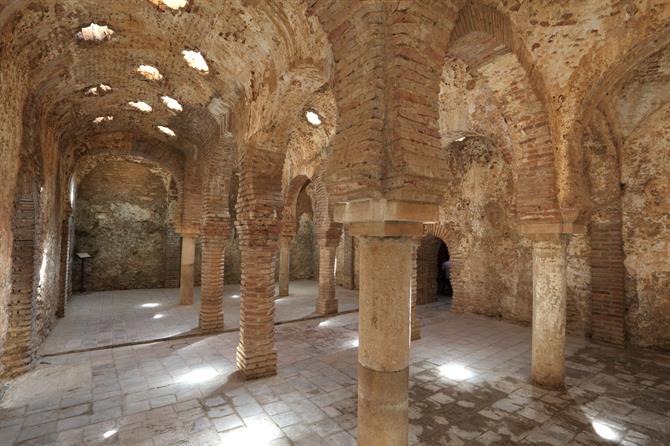
Ronda has been one of Andalusia’s most impregnable cities not just because of its geographical position, but also due to its city walls and gates which were built by the Moors throughout the Islamic era. These walls and gates were continually being added to as the city grew. Today, they provide a unique glimpse into Ronda’s past.
Visitors in Moorish times to Ronda would have entered the city via the Puente Arabe, eventually entering the city centre by going through the now decrepit Puerte de la Cijara. The largest and most protected city gate was the Almocabar one. It took its name from the Arabic cemetery (al-maqabir) which stood in this section of the town. The Almocabar gate faces Gibraltar and the sea and would have been a main point of entry for most people.
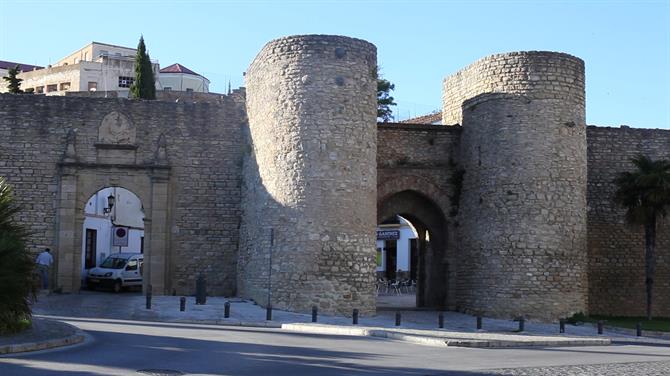
The Murallas del Carmen is particularly picturesque and has recently been reformed. It sets the scene numerous cultural events and has the Iglesia del Espíritu Santo, the Church of the Holy Spirit standing just next to it.
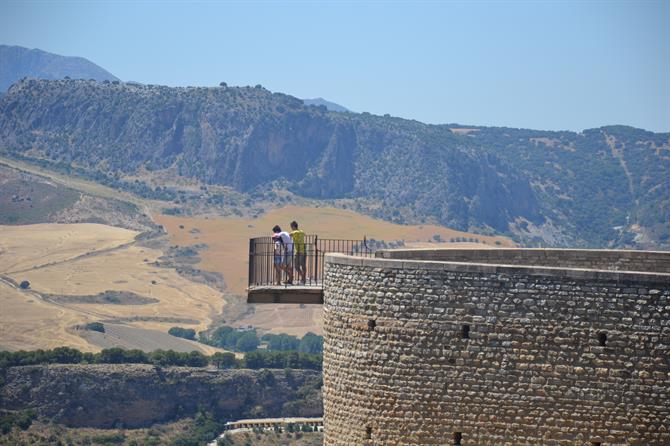
One of the most popular viewpoints of the city and with good reason. The views of the gorge, the Puente Nuevo and the surrounding countryside are spectacular. The viewpoint has been named in honour of the architect José Martin de Aldehuela. The same architect who built the bullring, the Puente Nuevo and finished Malaga's cathedral amongst other projects. The Balcón del Coño viewpoint is another that should not be missed. Ronda has so much more to offer, so it is a must when visiting Andalucia.